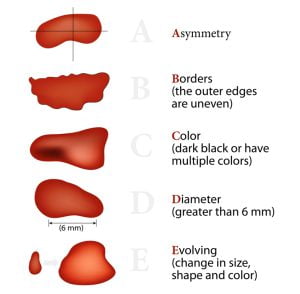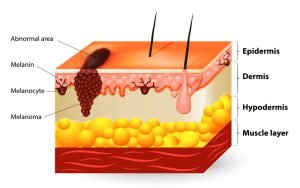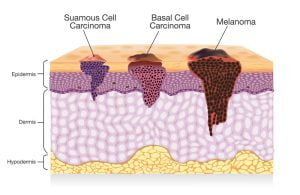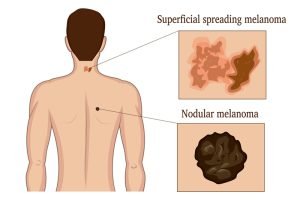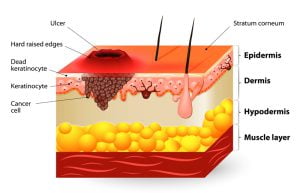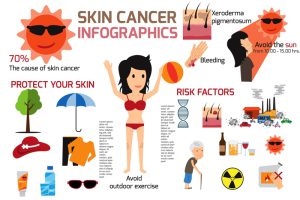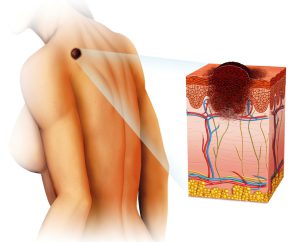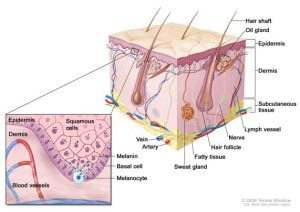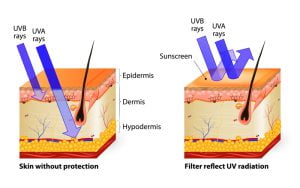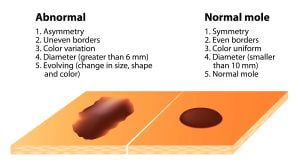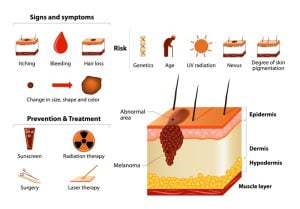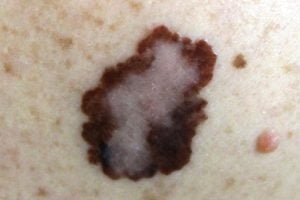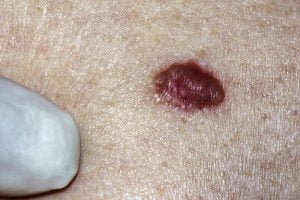Browsing: Skin Cancer Graphics
Comprehensive Information, Resources, and Support on Skin Cancer
The ABCDE rule is a guide to the usual signs of melanoma.
Melanoma is the most dangerous form of skin cancer. These cancerous growths develop when pigment-producing cells—known as melanocytes—mutate and become cancerous. Skin cancer may spread from where it began to other parts of the body. The method used to stage melanoma is based on the thickness of the tumor and whether the cancer has spread to nearby lymph nodes or other parts of the body.
There are three main types of skin cancer . The different types of skin cancer are named for the skin cell where the cancer develops – basal cell carcinoma, squamous cell carcinoma and melanoma. The most serious of them is melanoma.
The photo shows two types of skin melanoma on the neck and back of a man.
Lentigo maligna is an early form of melanoma in which the malignant cells are confined to the tissue of origin, the epidermis. It is often reported as ‘in situ’ melanoma.
Squamous cell carcinomas, also called epidermoid carcinoma, is a type of skin cancer that result from squamous cells. These cells form the surface of the skin lining of hollow organs in the body.
Learn about skin cancer basics
Skin cancers are cancers that originate from the skin. They are due to the development of abnormal cells that have the ability to spread to other parts of the body.
Three main layers of the skin are – epidermis, dermis, and subcutis.
Many experts believe that, especially for fair-skinned people, UV radiation also plays a key role in the development of melanoma.
While symptoms of the skin cancer can vary, new or unusual growths, or any changes in existing moles, may be early signs of the skin cancer.
Skin cancer is quite common, occurring in one in five Americans. But new treatment options can help improve prognosis and survival if people find the cancer at an early stage.
Melanoma is the most serious type of skin cancer. It develops in the cells (melanocytes) that produce melanin (pigment that gives your skin its color). Melanoma can also develop in eyes and, rarely, in internal organs, such as the intestines.
Human papillomavirus (HPV) is ubiquitous in skin and has been linked with nonmelanoma skin cancer. Human papillomaviruses (HPVs) consists of more than 200 related viruses. More than 40 HPV types can be easily spread through sexual contact, contact from the skin and mucous membranes of infected people.
Basal cell carcinoma is a skin cancer that grows on parts of your skin that get a lot of sun.
ADVERTISEMENT




